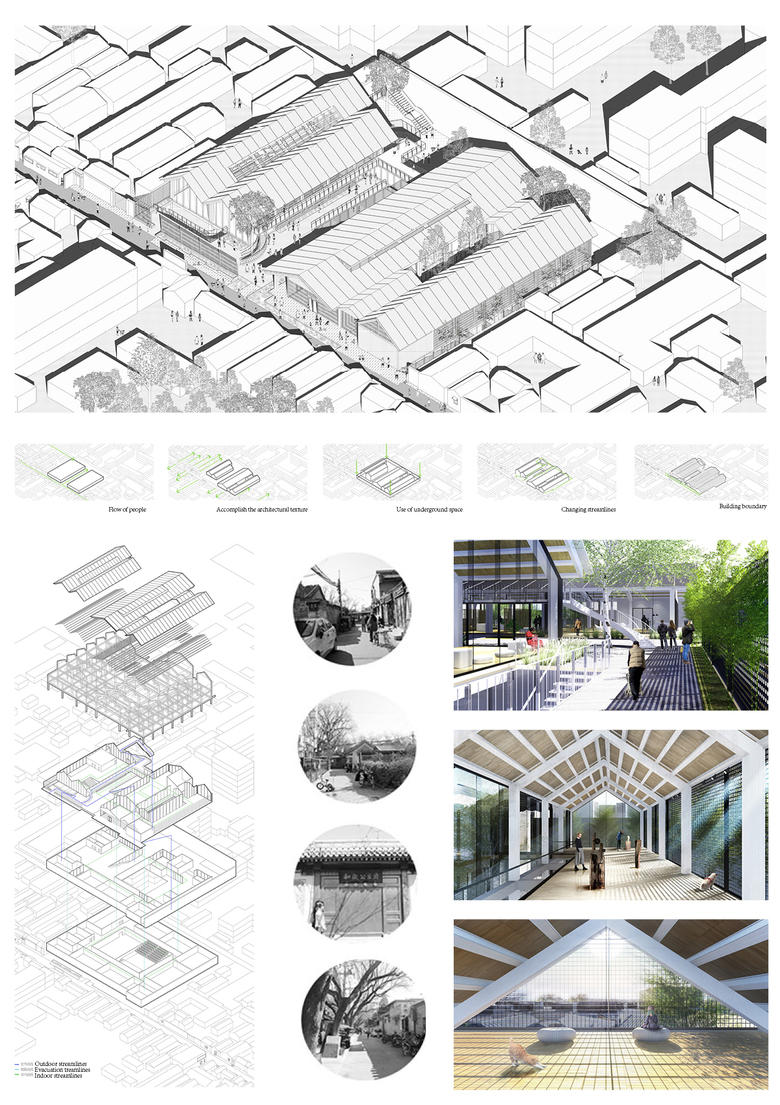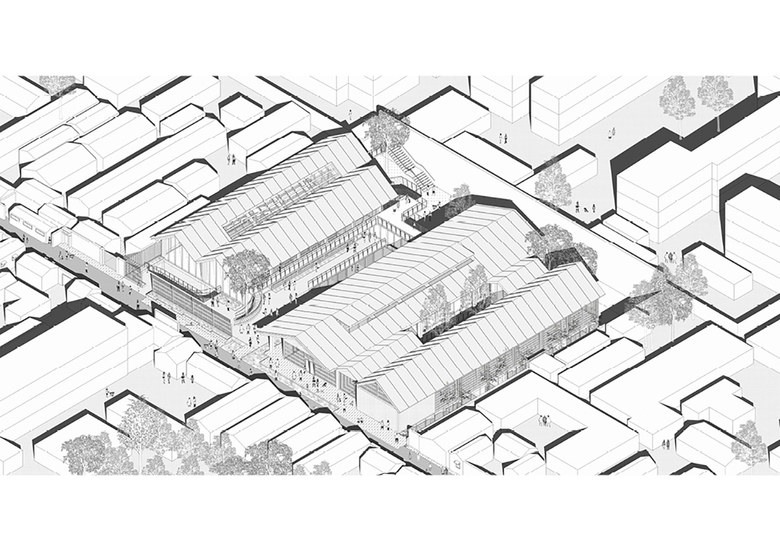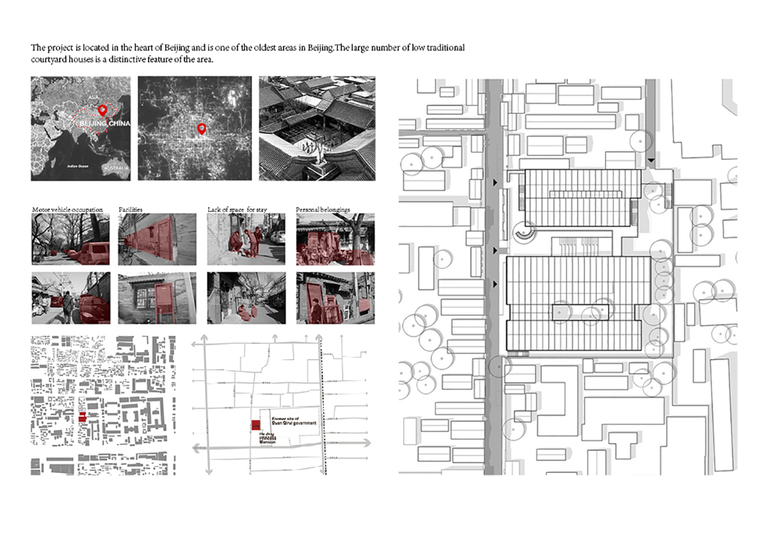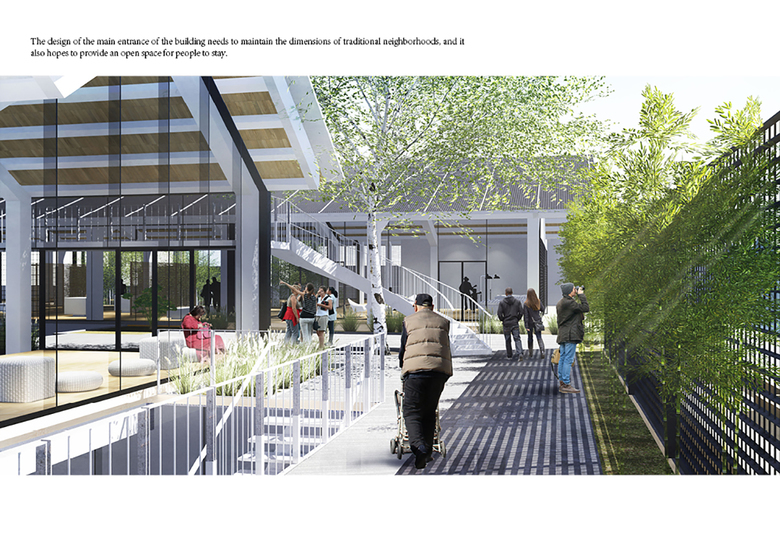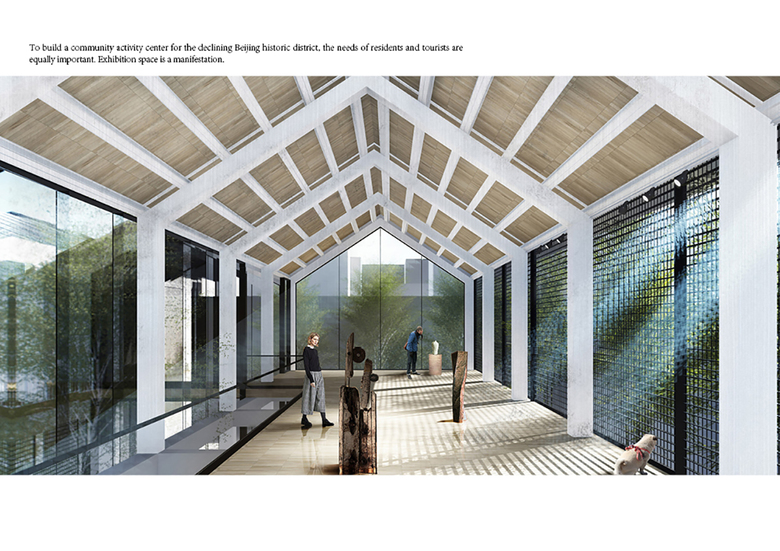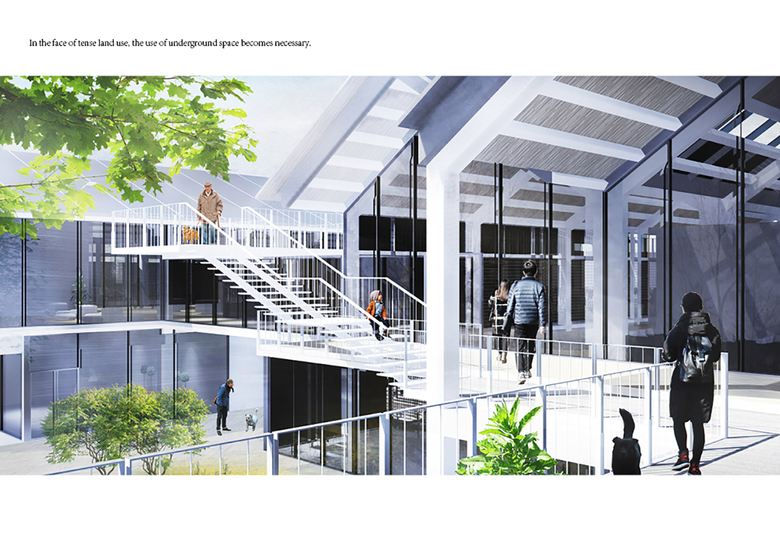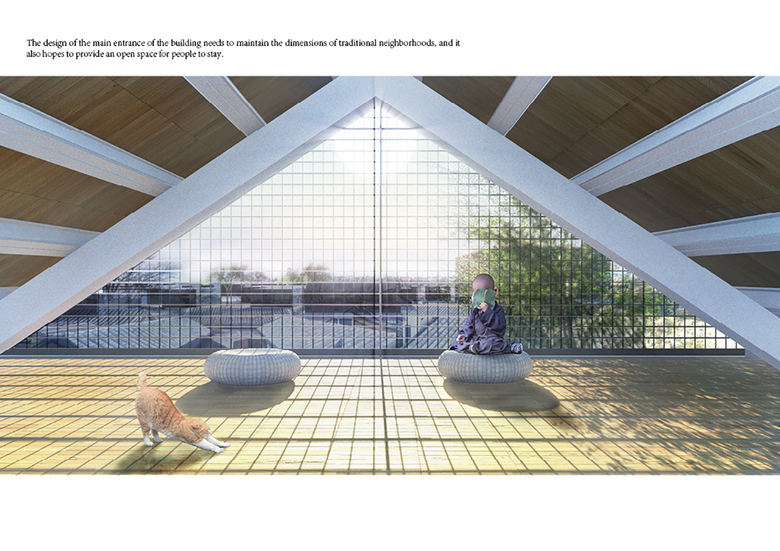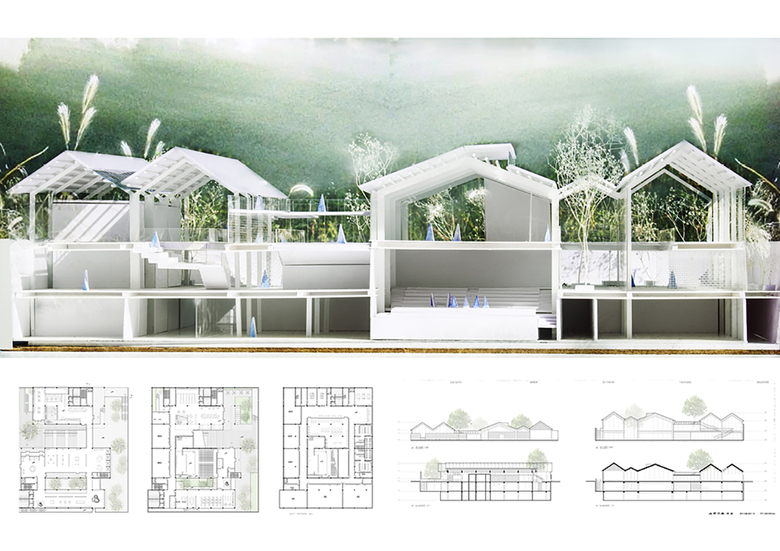Symbiosis in Hutong: Community Center in Historic District
- Students
- Mengjia Liu
Reshaping the relationship between history and the moment, man and nature.
What kind of architecture does Beijing's historic district need? How can people's lives be improved? How to build the relationship between man and nature? The project's mission is to build a community activity center in Beijing's oldest district to reshape the harmonious relationship between history and the present, man and nature.
The project is located in the heart of Beijing. There exist the famous Beijing’s courtyard houses, Hutongs and historical places. The accumulation of foreign low-income groups changed the life here. Crowded Hutongs and a lot of low-rise dwellings mixed with the unauthorized buildings became distinctive features of the area.Local residents urgently need more space for public activities. The mission is to build a community activity center for the surrounding community. Bold changes were made on the two buildings that exceeded the height limit of about 200%. The proposal is not to build a city landmark, but to inherit traditions so as to live in harmony with traditional buildings.
What kind of community activity center should be built in such a historical block short of land, public space and green space? Through the analysis of the current situation of the site, the following three design objectives have been put forward: inheriting history, creating an active public space and improving the quality of street space. 1. Inheritance of history. The new building, with restrictions on the height and form of the building, needs to be in harmony with the historic neighborhood. a) The inheritance with traditional Siheyuan buildings is reflected in the architectural layout, spatial organization and materials. b) Maintaining fabric is much more important in this case. The overall layout of the building conforms to the architectural texture of the surrounding area. In addition, the building faces south with a wide face and a short depth, which helps to gain more sunshine. c) The set of multiple yards in the north-south is an interpretation of the traditional courtyard pattern. d) Modern materials such as metal and glass bricks were used on the facade, representing a modern transfer of masonry structures. 2. Public space The most important function is to rebuild the neighborhood relations and satisfy the modern life needs. a) Whether local residents, foreign residents or tourists, they can exchange ideas, relax or learn skills in the community activity center, so as to achieve the integration of different social groups. b) A variety of activities are provided in the community activity center, including library, café and outdoor theater.
Related Projects
Magazine
-
Concéntrico 05
on 2/28/19
-
L'arquitectura d'autor patrimoni a Catalunya
on 11/29/18
